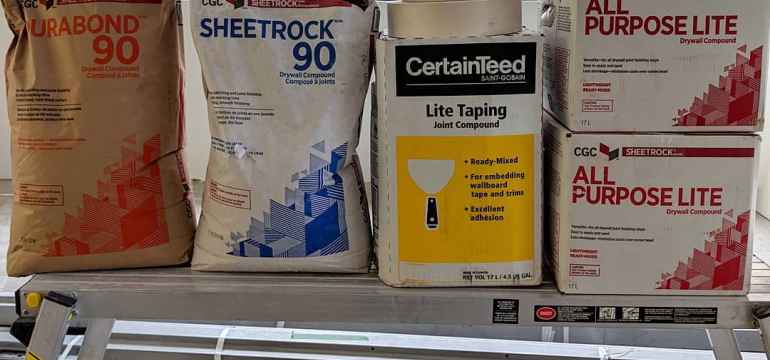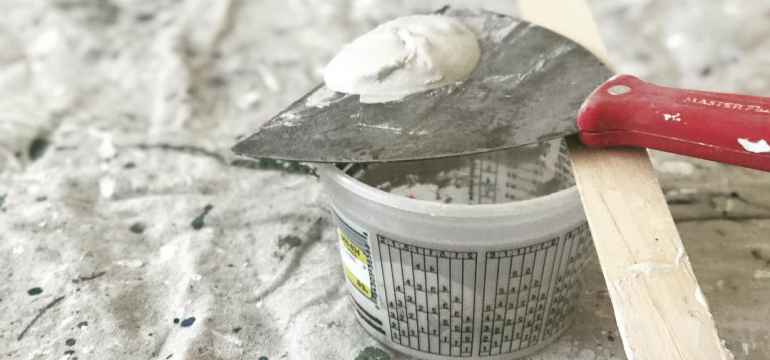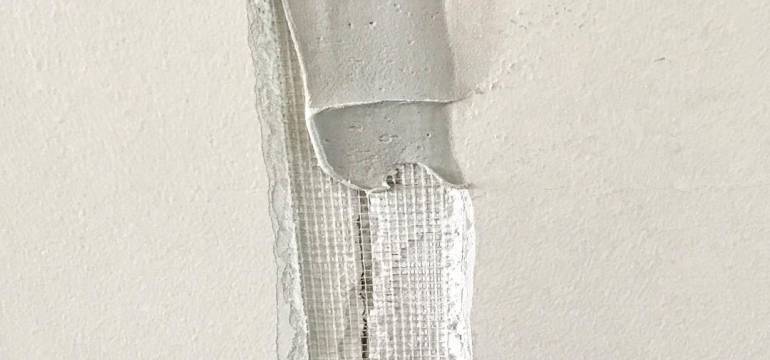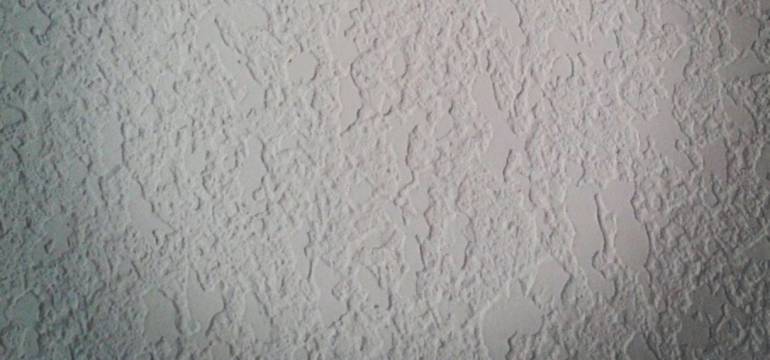Whether you are taping drywall seams or patching a hole in the wall, most homeowners are inevitably faced with a choice between joint compound and plaster. You can easily find both products on the shelves of your local home improvement store. Both advertise that they can perform the same basic tasks, so how do you know which one is right for your project?
Understanding the basic differences between joint compound vs. plaster is can help you to make the right decision for your next project. If you’re not sure which one to choose, here are a few things you might want to consider.
The Basics of Joint Compound vs. Plaster

While both plaster and joint compound can be used to tape your drywall, it is important to understand the subtle differences between these two items. Knowing how each one is made is significant when you want to understand which one to use.
Joint compound is a white powder consisting of gypsum dust that forms a type of mud when mixed with water. Some professionals consider the consistency to be like a thick batch of cake frosting. This joint compound is sometimes also referred to as drywall mud by the professionals.
On the other hand, plaster is made up of lime or a combination of gypsum powder, sand, and water. Unlike joint compound, this mixture forms a relatively thick paste. This difference in consistency is one of the most important features that sets the two categories apart.
Application of Plaster vs. Mud

In order to decide which one to use, you must consider the application. Most people who are wondering about the difference between plaster of Paris vs. joint compound need to tape their drywall seams. If this describes you, then you are most likely looking for joint compound.
Joint compound has a longer working time, which could be ideal if you are unaccustomed to taping drywall seams.
It also allows you to spread a thinner coat that can be more easily sanded when the project is finished. Using joint compound instead of plaster allows you to get a smoother wall surface with less manual effort.
Keep in mind that joint compound is only ideal for gaps that are 1/8” or less. As it dries and sets, this drywall mud is also more prone to cracking.
If you decide to use plaster, you will find that the entire project becomes more labor-intensive. Because of the thicker consistency, you will likely have to sand it down more heavily before you can achieve a seamless finish between two sheets of drywall.
However, it is an ideal product to use in small areas that are larger than 1/8” in size or areas that are prone to more cracking.
Homeowners who have lots of taping to do might favor joint compound. However, small repair jobs that need a faster drying time may prefer to use patching plaster. The application tends to indicate which product is the best fit for your project.
Repair Work

Sometimes, you might need to know how which product is the best to use for simple repairs instead of fully taping drywall seams. The answer to this one really varies depending on what the problem is. In most circumstances, plaster is going to be the best solution for a hard-to-handle problem or visible defects in the drywall.
Because it is less prone to cracking and is a thicker product, plaster can be used to cover a wide variety of surfaces, dents, and dings. It tends to do better when covering joints or screw holes.
Resurfacing an entire wall or a particularly tricky patch job may lead you to choose plaster. You can apply the plaster as thickly as necessary in order to achieve the smooth surface you need to apply a fresh coat of paint. While you may have to sand more heavily, plaster tends to be more effective than joint compound at solving this type of problem.
Texturizing Walls

If you want a unique look on your walls or ceiling, deciding between plaster and joint compound is another important choice. Consider what type of texture you would like these walls to have before heading to the home improvement store to pick up your materials.
Joint compound is great for common textures such as popcorn ceilings or knockdown textures. Unfortunately, the trend for these two types of textures seems to be fading from popularity. More homeowners are now opting for custom textures and unique finishes.
Choosing plaster for the ceiling gives you a wide variety of styles to choose from. Using a broom, you can swirl the plaster around on the ceiling to create a one-of-a-kind texture. You can also use a sponge or a trowel to place texture exactly how you want it. Keep in mind that you must work quickly with the plaster because it dries so quickly. It is best to work in small areas at a time.
Conclusion
While it may seem like joint compound and plaster have a lot of things in common, they are actually used for different purposes. Evaluate what your specific needs are before you dive into a new project and purchase materials. Your local home improvement store should be able to help you select a quality joint compound or plaster to complete your latest project!
- How to Cut Lexan - September 25, 2020
- Mineral Spirits vs. Mineral Oil - September 25, 2020
- Shellac vs. Polyurethane - September 24, 2020


Paula Dunlap
Wednesday 29th of March 2023
This isn't a comment but a question. Will plaster adhere to a painted ceiling. I had ceiling tiles installed unfortunately the person who did the work used liquid nail so now the tiles have absorbed the liquid nail, shrinking and falling off the ceiling.